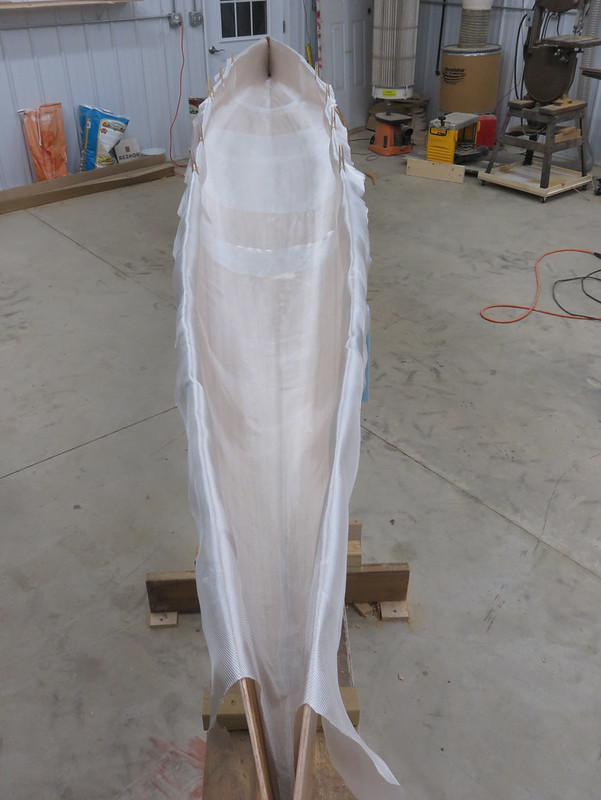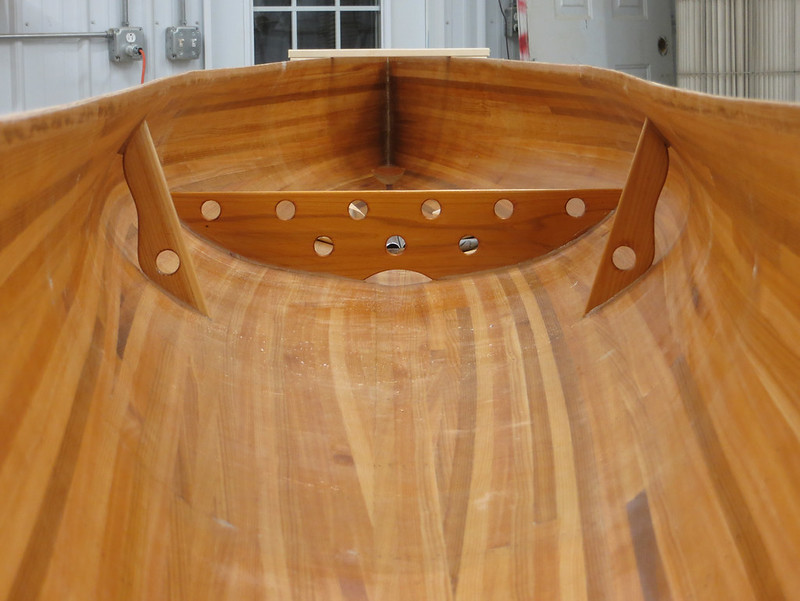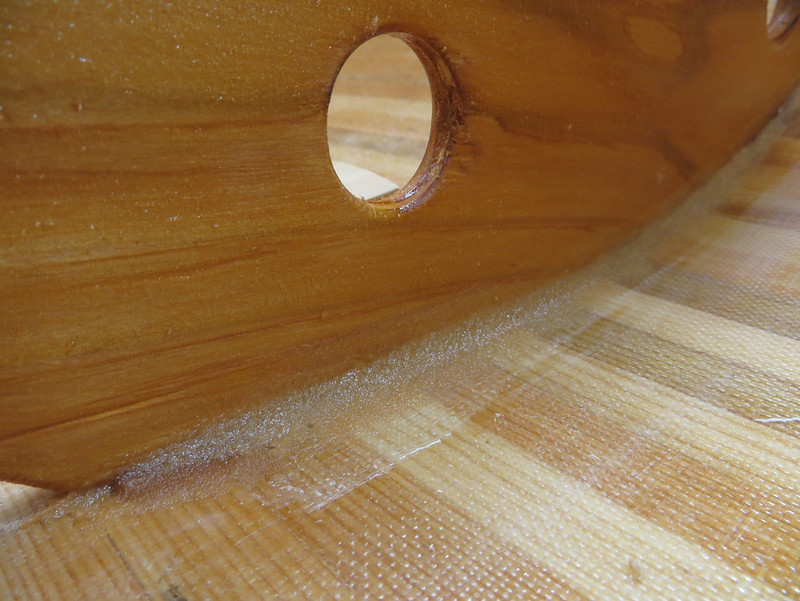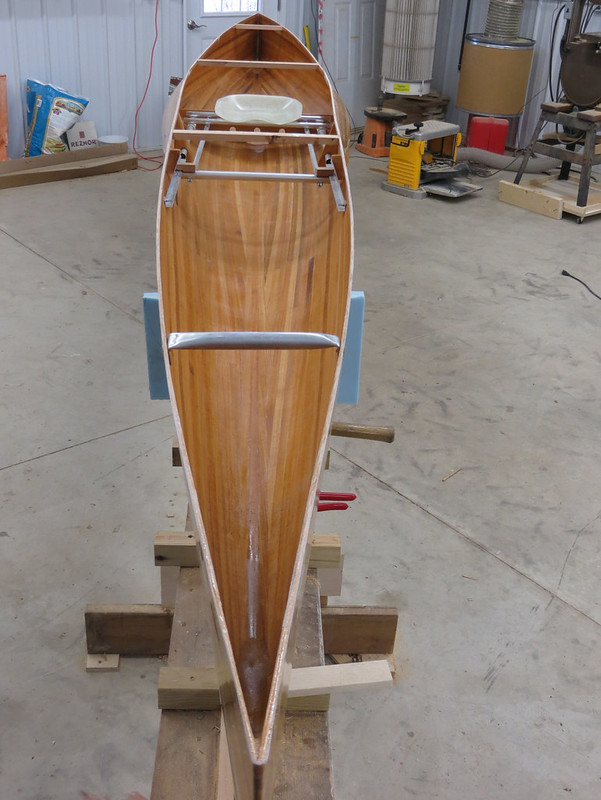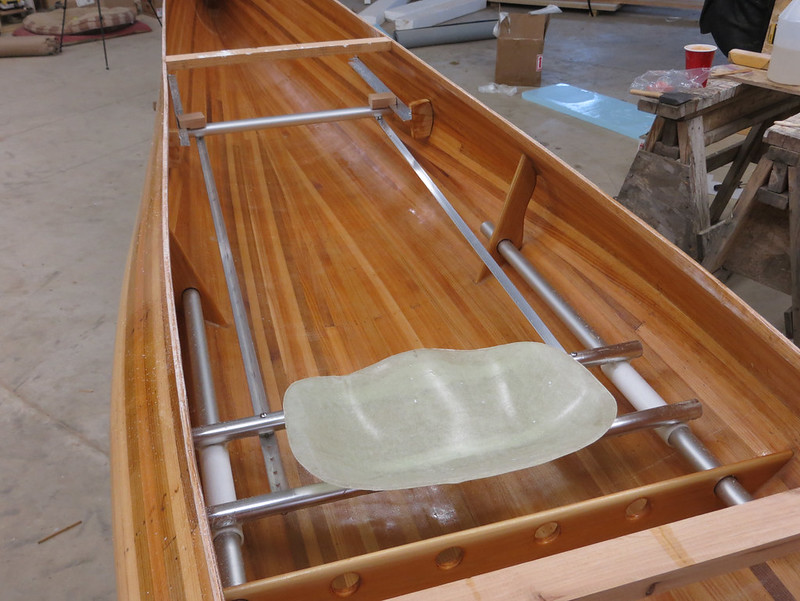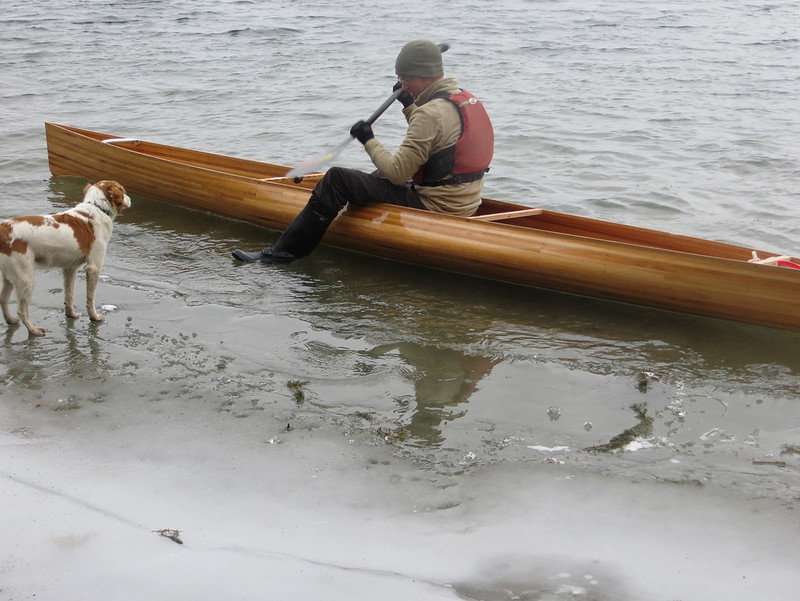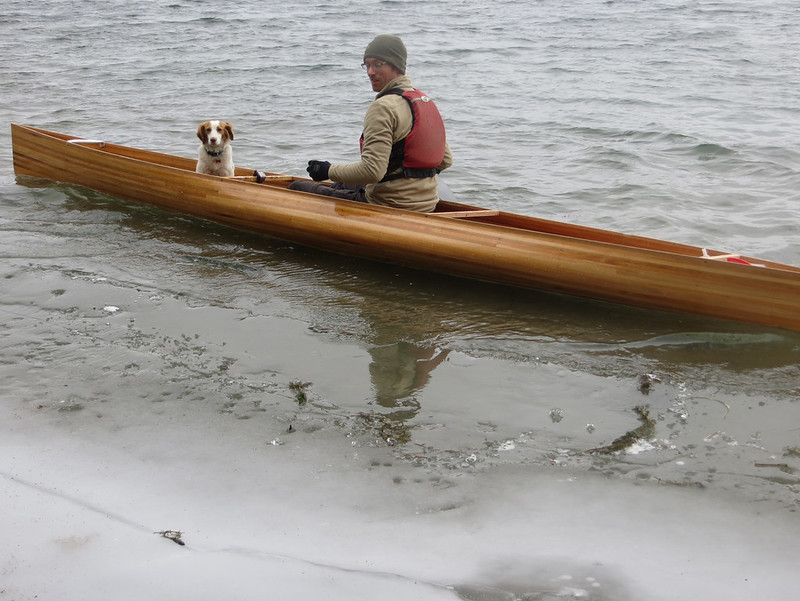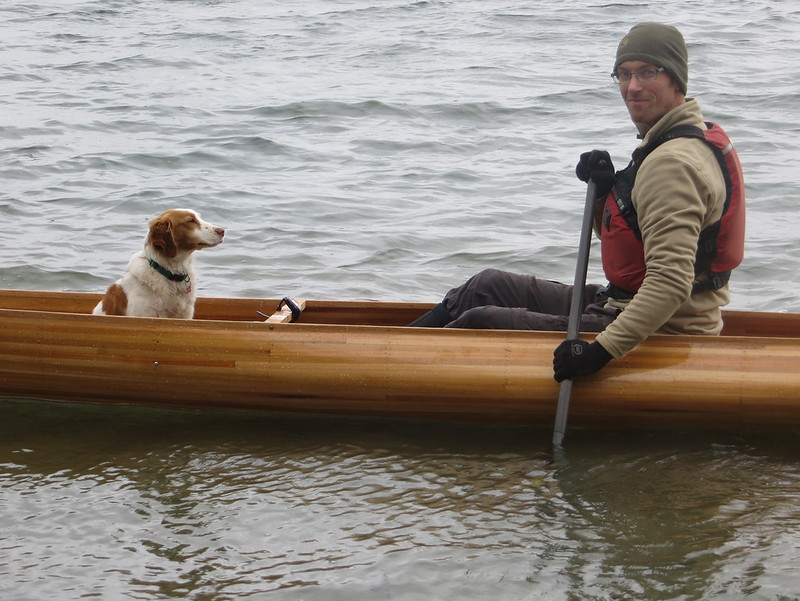Not too worried about the thin integrated gunwales based on a woodstrip racing boat I used to have that only had a thin, about 1/4" high, hardwood strip added to the top of the cedar, presumably for wear resistance. Once glassed inside and out the cedar frame is surprisingly stiff and I think it will hold up fine. The oak strips will be encased in that fiberglass sandwich as well. There will be a few thwarts. Aluminum for now to get it done and maybe CF later if the boat works out and I want to spend more time prettyfying it. I'll also have other hull supports similar to what I integrated into the seat/foot brace on the Barracuda, pictured below.
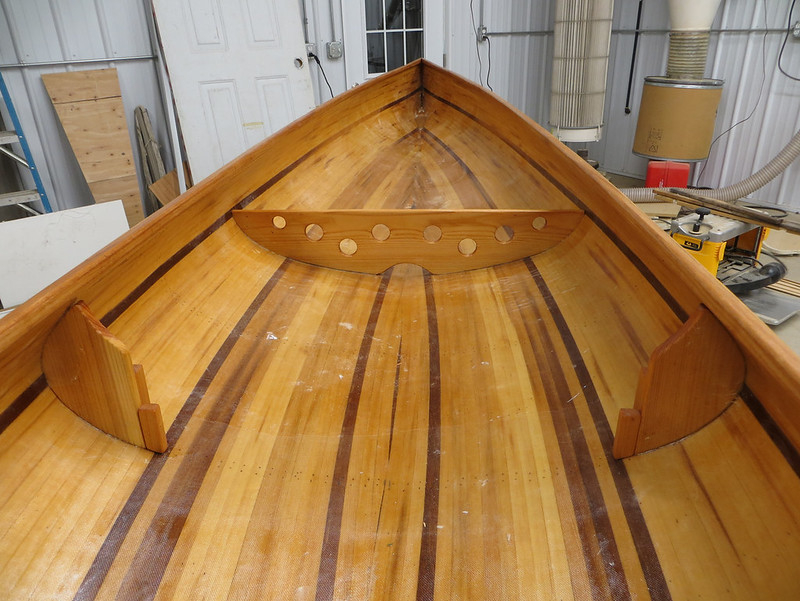
20140731_016 by Alan Gage, on Flickr
Certainly isn't something I'd want to do on a tripping boat but this is just for workouts and racing, a pretty easy life. If it doesn't work out adding something more substantial after the fact won't be a huge deal.
I got some exciting news this morning! There's still open water within 20 miles of me! I thought all the lakes froze over last week but we have one semi-large but very deep (165ft) lake and it's yet to ice over despite the fact that we haven't been over freezing (or even close to it) in over a week, a few nights below zero, and lots of wind. I checked the water report this morning and it's at 38 degrees. If I can get the inside fiberglassed by Wednesday or maybe Thursday and if the ice up can hold off until this weekend, when we're expecting highs in the low/mid-30's, I might be able to get it on the water for a test without having to drive 4+ hours.
Gonna be close on both ends. We aren't even supposed to see the 20's until Friday with single digit lows and I've got plenty of work to do before it's ready to paddle. Including waiting for epoxy to set!
Alan

20140731_016 by Alan Gage, on Flickr
Certainly isn't something I'd want to do on a tripping boat but this is just for workouts and racing, a pretty easy life. If it doesn't work out adding something more substantial after the fact won't be a huge deal.
I got some exciting news this morning! There's still open water within 20 miles of me! I thought all the lakes froze over last week but we have one semi-large but very deep (165ft) lake and it's yet to ice over despite the fact that we haven't been over freezing (or even close to it) in over a week, a few nights below zero, and lots of wind. I checked the water report this morning and it's at 38 degrees. If I can get the inside fiberglassed by Wednesday or maybe Thursday and if the ice up can hold off until this weekend, when we're expecting highs in the low/mid-30's, I might be able to get it on the water for a test without having to drive 4+ hours.
Gonna be close on both ends. We aren't even supposed to see the 20's until Friday with single digit lows and I've got plenty of work to do before it's ready to paddle. Including waiting for epoxy to set!
Alan

